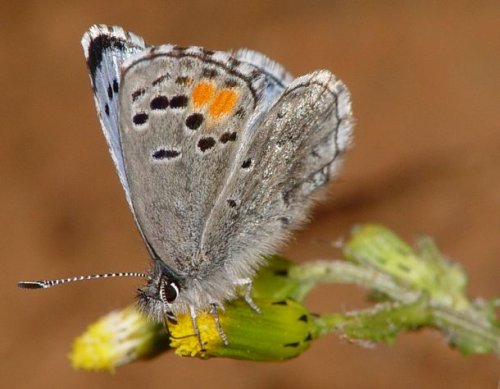
This spectacularly beautiful butterfly occurs at Washington and Lang Crossing. It is intensely local on the West slope of the Sierra, flying along rocky cliffs in canyons where the host plant, the succulent Dudleya cymosa, grows; but it is not found in many places where the plant occurs. The butterfly emerges extremely early in the year and is thus easy to miss; often, when it is out, there is nothing in bloom for it to visit. It has been taken as early as late February at 5000' in a drought year. Usually it is out March-May at Washington and April-June at Lang. Eggs are laid singly on the host; the larva bores inside one of the succulent leaves, creating a translucent "window" easy for the cognoscenti to spot. It pupates among dead leaf bases when the plant is senescing and remains dormant for about 9 months. Males frequently spill down a cliff, then rise to the top and do it again. Some populations occur on serpentine, but ours are on metasedimentary substrates.
When this early-bird butterfly has flowers to visit, they are usually Fiddleneck (Amsinckia) or some Brodiaea or other.
